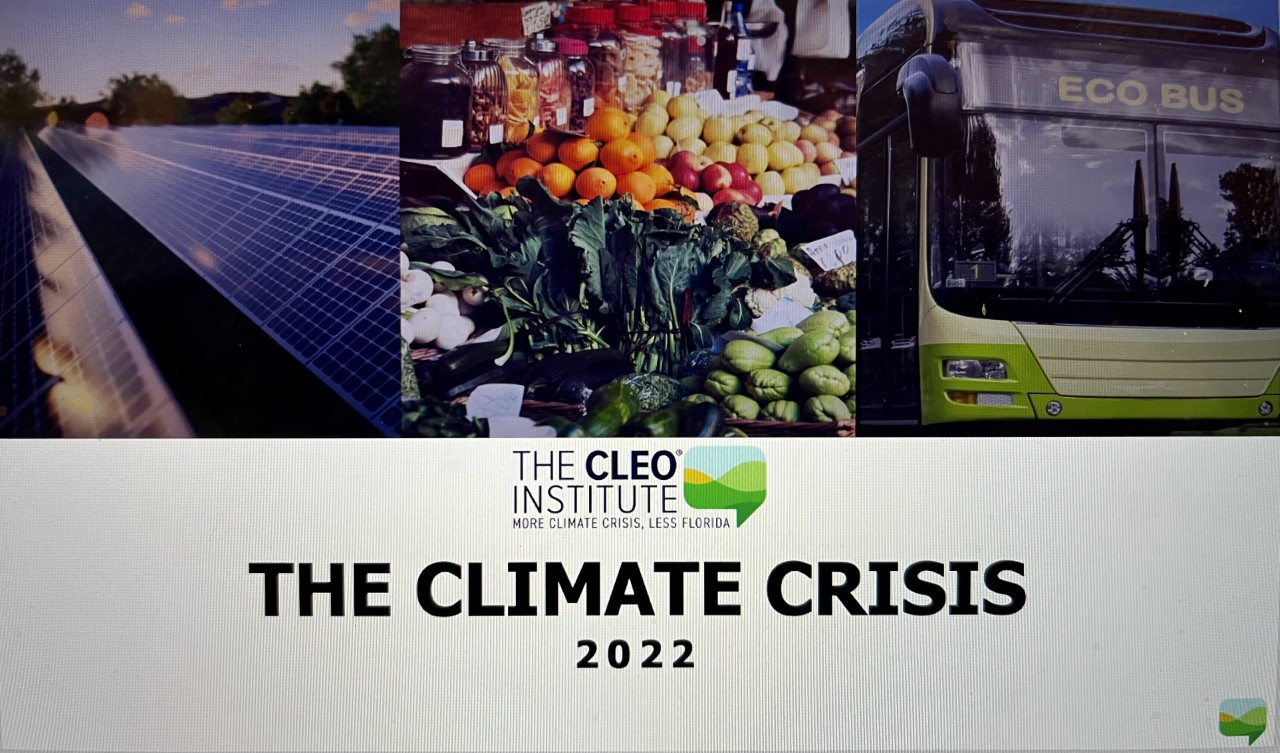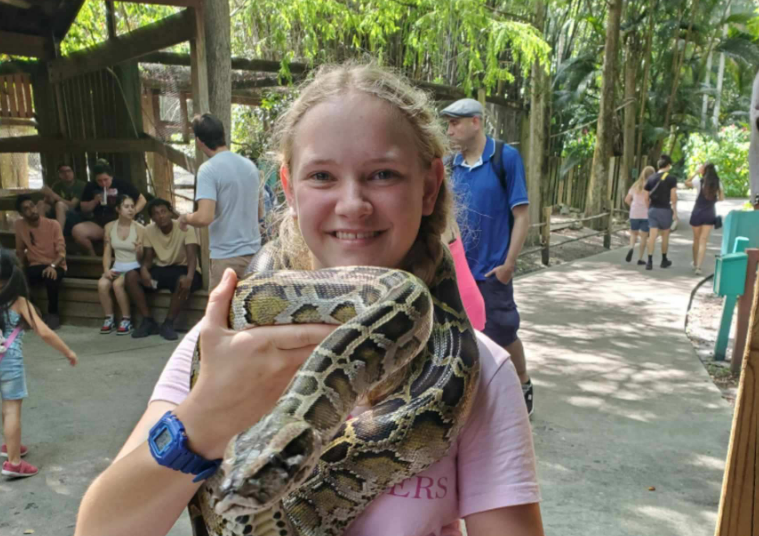
Hello, my name is Tiffany. I am a member of the Flamingo Garden’s Eco-teers, a volunteer outreach group that focus on environmental projects in Broward County promoting habitat protection, coastal resilience, and climate education.

Today we have teamed up with the CLEO Institute to help connect the dots between climate science, impacts and solutions. The CLEO Institute is a nonprofit, nonpartisan organization dedicated to climate education and advocacy. All the information presented in this article comes from reputable, scientific organizations and institutions.

Before you can understand the climate crisis you need to understand the greenhouse effect. The greenhouse gas effect is the natural heating (global warming) of the Earth’s surface by heat-trapping gases (called greenhouse gases) in the atmosphere that trap heat radiating from Earth toward space.2

The flow of incoming solar energy is equivalent to the flow of outgoing heat from Earth towards space. When the outgoing heat (outgoing because it’s heading back to outer space) energy encounters greenhouse gases, the gasses trap the outgoing heat keeping it in the atmosphere! The heat is then re-radiated back towards the Earth again, creating a blanketing effect. This supplemental heating of the Earth’s surface by heat-trapping gases is called the greenhouse gas effect. The greenhouse gas effect is necessary for life on Earth. It keeps the Earth at a perfect temperature. Without it, we would live on a frozen tundra.

The problem is that TOO MUCH of that energy that is supposed to be outgoing into space, is instead being trapped by greenhouse gases. Why? Because human kind has increased the concentration of greenhouse gases in the atmosphere due to burning fossil fuels that emit greenhouse gasses, like Carbon dioxide (CO2).

Before the Industrial Revolution, natural climate variation caused atmospheric CO2 to vary between 200 ppm (parts per million) in the ice ages and 300 ppm in warmer temperatures. Today we are at 414 ppm of CO2 in the atmosphere, a statistically significant difference. Remember, that when we talk about climate change – we are taking about a change in precipitation and temperature patterns over a long period of time, spanning up from hundreds to millions of years.
Scientists have identified how much CO2 comes from natural sources, and how much comes from combusted fossil fuel sources. Compared to other carbon sources, carbon from fossil fuels has a distinctly different “signature,” or molecular fingerprint. Carbon dioxide (CO2) is an important heat-trapping (greenhouse) gas, and it is known as the driver of climate change. CO2 is released through human activities like burning fossil fuels and deforestation. Certain natural processes release CO2, like plants and human respiration and volcanic eruptions, but natural processes are not causing this statistical increase – the rate at which humans are pumping greenhouse gasses in the atmosphere is.

There are some that do not believe in climate change but there is a scientific consensus on the matter. 99% of international climate scientists agree that global warming is increasing, it is caused by human activity, and it is happening now.
Think of it this way – If a fireman calls you and tells you they are 97% sure your house is on fire, are you going to stand around and think about the 3% of uncertainty or are you going to ask him to put out the fire?
Experts are telling us our planet is on fire- what we do next will determine the future of the planet.

The climate crisis impacts everything that we care about. We all have one thing in common- Earth, and it’s the only one we have. Everything we care about is connected to our planet, which is why we must do everything we can to preserve it. Now.
About the Author- Tiffany Engel is a Senior at David Posnack Jewish Day School and volunteer member of Flamingo Gardens’ Eco-teers. Her blog The Greenhouse Gas Effect is Part 1 of the “Climate Change 101” presentation presented by the Eco-teers as part of their November 2022 Climate Fair. Look for Part II, Climate Change Impacts, to follow next month.










